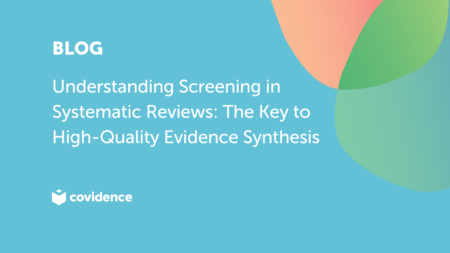You’ve probably heard of systematic reviews and rapid reviews as both play a key role in helping us understand evidence, but they have different goals and timelines. Let’s break down what each type of review does and how they differ.
What’s a Systematic Review?
As we know, a systematic review is a thorough, detailed process designed to gather and assess all relevant research on a specific topic. The goal is to provide a complete and unbiased picture of what the evidence says by following a structured approach.
Systematic reviews are valuable because they pull together all the available research, analyse it carefully, and minimise bias. This makes them highly reliable for guiding decisions, whether it’s about healthcare, education, or policy. If you want to know what the evidence really says about a topic, a systematic review gives you the most comprehensive answer.
Systematic reviews are commonly used in healthcare, public health, and social sciences to inform practice, policy, and future research. Because they take a rigorous and unbiased approach, their results are trusted for making evidence-based decisions.
Check out this blog to find out more about Systematic Reviews.
What’s a Rapid Review?
In a nutshell: A rapid review is, as the name suggests, a faster version of a systematic review. It follows the same basic principles—gathering and summarising evidence—but it streamlines the process to get results quicker. The goal is to provide evidence in a timely manner, often when decisions need to be made quickly.
Why it’s useful: Rapid reviews are useful when time is of the essence. For example, during a public health crisis or when policymakers need answers quickly, waiting for a full systematic review might not be feasible. Rapid reviews provide a solid evidence base in less time, which can be crucial for making informed decisions under tight deadlines.
How it works: While systematic reviews take months (or even years), rapid reviews speed things up by simplifying certain steps while maintaining rigour. For example, they may limit the number of databases searched, skip certain types of studies, or reduce the amount of time spent on quality assessments. This allows them to produce results faster, but it also means they might not be as thorough as a full systematic review.
Where you’ll see it: Rapid reviews are often used in situations where decisions need to be made quickly, like during public health emergencies, in fast-moving policy environments, or when healthcare providers need to make treatment decisions. They’re becoming more popular in fields like healthcare and education where evidence is needed quickly but still needs to be solid.
You might want to take a look at this blog: What are ‘rapid reviews’ and why do we need them?
Quick Comparison: Systematic Reviews vs. Rapid Reviews
- Scope: Systematic reviews are designed to be comprehensive, aiming to include all relevant studies on a topic. Rapid reviews, on the other hand, focus on producing results quickly, often by streamlining the process.
- Timeline: Systematic reviews can take months or even years to complete because they aim for thoroughness. Rapid reviews are much quicker, often completed in a matter of weeks or even days.
- Goal: The goal of a systematic review is to provide a complete, summary of all available evidence on a topic while minimising the risk of bias. The goal of a rapid review is to give decision-makers reliable evidence quickly, even if that means sacrificing some thoroughness.
Why Does This Matter?
Knowing the difference between systematic reviews and rapid reviews is key, especially when time and accuracy are important. Systematic reviews are your go-to when you want a deep, detailed look at all the evidence on a topic—they’re thorough and reliable but take a long time. On the other hand, rapid reviews give you quicker answers, which is critical when decisions need to be made right away, even though they might not be as comprehensive.
Both types of reviews have their place. Systematic reviews are great for long-term planning or when you need to establish a strong evidence base. Rapid reviews are perfect for situations where speed is more important, but you still need reliable information.
In the end, understanding when to use each type of review can help ensure that decisions—whether in healthcare, policy, or research—are based on the best available evidence, even when time is limited.
Click here to go back to Covidence Academy.
Already have an account? Sign in and start screening!
Explore more resources.


